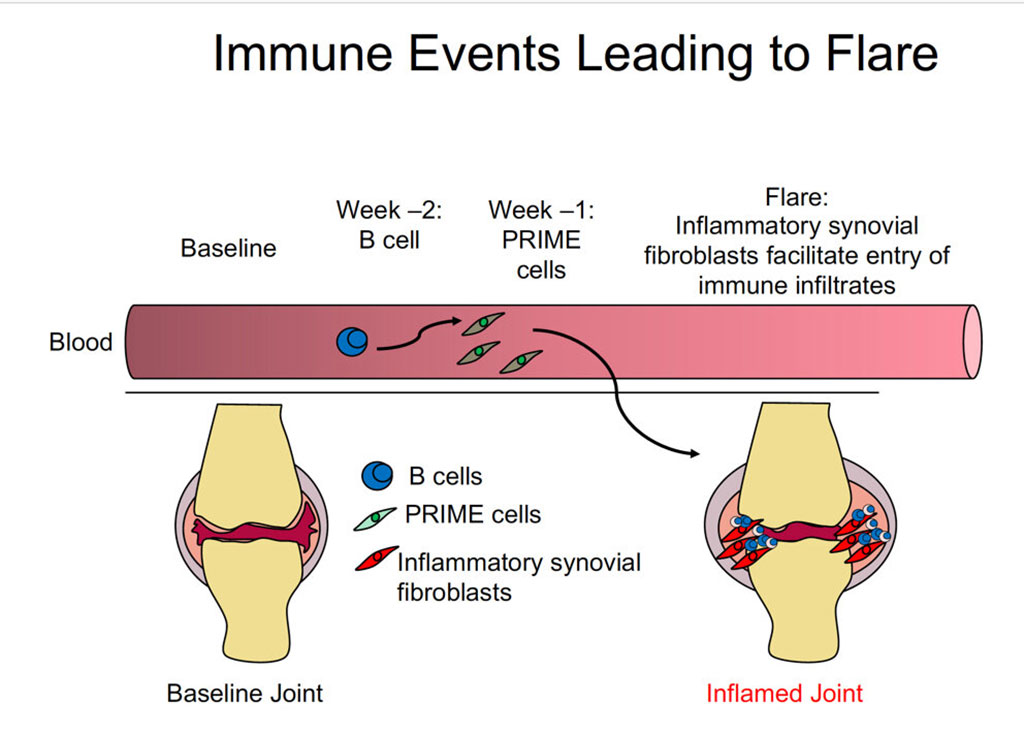RNA Sequencing Identifies Novel Cell Class Linked to Rheumatoid Arthritis Flares
By LabMedica International staff writers
Posted on 28 Jul 2020
A novel class of blood cells has been identified, which may serve as a biomarker able to predict the imminent occurrence of an episodic “flare” in patients with rheumatoid arthritis.Posted on 28 Jul 2020
Rheumatoid arthritis, like many inflammatory diseases, is characterized by episodes of quiescence and exacerbation (flares). The molecular events leading to flares are unknown.

Image: Immune events leading up to a rheumatoid arthritis flare (Photo courtesy of Dr. Dana Orange, Rockefeller University)
In order to search for molecular markers able to predict the onset of a flare, investigators at Rockefeller University (New York, NY, USA) established a clinical and technical protocol for repeated home collection of blood in patients with rheumatoid arthritis to allow for longitudinal RNA sequencing (RNA-seq).
Following this protocol, specimens were obtained from 364 time points during eight flares over a period of four years in one patient, as well as from 235 time points during flares in three additional patients. Transcripts were found that were differentially expressed before flares, and these were compared with data from synovial single-cell RNA-seq. Flow cytometry and sorted-blood-cell RNA-seq in additional patients were used to validate the findings.
Results revealed consistent changes in blood transcriptional profiles one to two weeks before a rheumatoid arthritis flare. B-cell activation was followed by expansion of a novel class of circulating PRIME (CD45−CD31−PDPN+ preinflammatory mesenchymal) cells in the blood. These cells shared features of inflammatory synovial fibroblasts. Levels of circulating PRIME cells decreased during flares in all four patients, and flow cytometry and sorted-cell RNA-seq confirmed the presence of PRIME cells in 19 additional patients with rheumatoid arthritis.
"PRIME cells are one thing you might want to target to arrest the flare before it happens," said senior author Dr. Robert B. Darnell, professor of cancer biology at Rockefeller University. "That is the ideal of medical science - to know enough about a disease that you can put your finger on what is about to make someone sick."
The rheumatoid arthritis paper was published in the July 16, 2020, online edition of the New England Journal of Medicine.
Related Links:
Rockefeller University













